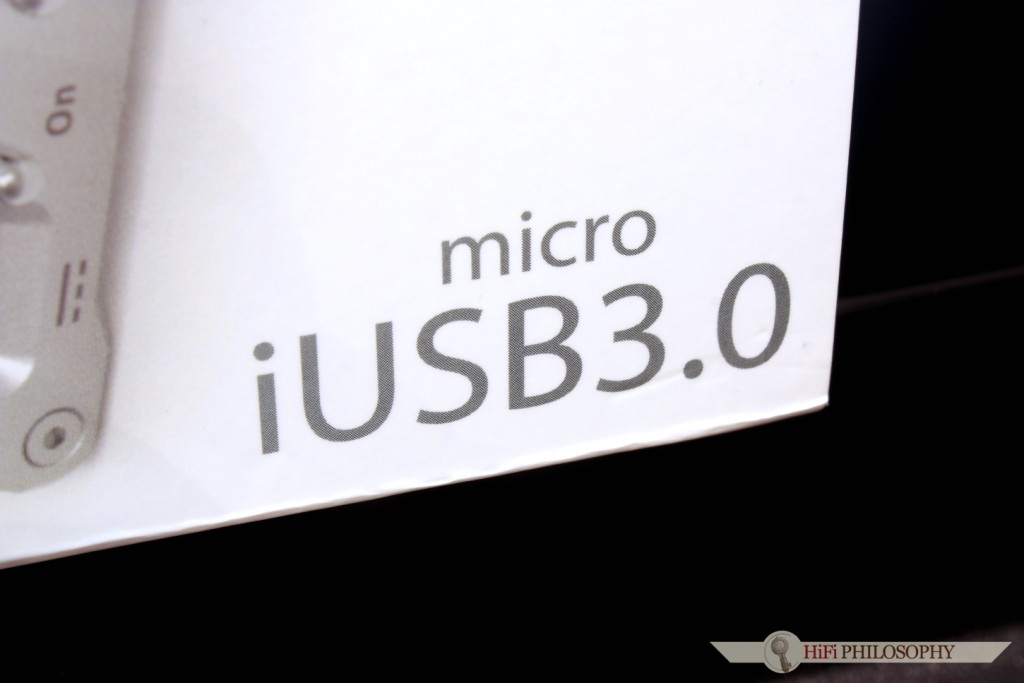 ifi is setting new standards and is doing so in many aspects at the same time. The first – probably the most important, but not mentioned by the company itself – is the pace of changes. New devices pop up one after another, not giving the competition a chance to catch their breath. Other novelties, which also make the competition struggle for breath, are innovative solutions produced on a massive scale and widely implemented, and in the case of ifi they are packed into small boxes that cost next to nothing, at least for audiophile standards. Almost everything is in the price range between one and two thousands, only rarely considerably exceeding the two thousands, so everyone can enjoy this flurry of innovations. And let’s be clear – ifi has built a worldwide career. The decision to switch the emphasis from large-size, stationary devices, sold under the name AMR (Abbingdon Music Research) to small, mobile devices has earned them a really impressive success, the sweetest fruits of which are harvested in Asia and America, but Europe is also not to be sniffed at. The sales are skyrocketing everywhere, and this means proportional profit which opens the door to new technological possibilities, which, in accordance with the principle of positive feedback, is the driving force for even greater success. It is therefore, a real perpetual motion machine, which so far works like a charm. Apart from that, they are gaining and reinforcing prestige, and the company is already recognized by everyone, which of course has a double impact on their success: clients buy things more readily when the brand is well known, and even potentially the best novelties with unknown name are approached with caution.
ifi is setting new standards and is doing so in many aspects at the same time. The first – probably the most important, but not mentioned by the company itself – is the pace of changes. New devices pop up one after another, not giving the competition a chance to catch their breath. Other novelties, which also make the competition struggle for breath, are innovative solutions produced on a massive scale and widely implemented, and in the case of ifi they are packed into small boxes that cost next to nothing, at least for audiophile standards. Almost everything is in the price range between one and two thousands, only rarely considerably exceeding the two thousands, so everyone can enjoy this flurry of innovations. And let’s be clear – ifi has built a worldwide career. The decision to switch the emphasis from large-size, stationary devices, sold under the name AMR (Abbingdon Music Research) to small, mobile devices has earned them a really impressive success, the sweetest fruits of which are harvested in Asia and America, but Europe is also not to be sniffed at. The sales are skyrocketing everywhere, and this means proportional profit which opens the door to new technological possibilities, which, in accordance with the principle of positive feedback, is the driving force for even greater success. It is therefore, a real perpetual motion machine, which so far works like a charm. Apart from that, they are gaining and reinforcing prestige, and the company is already recognized by everyone, which of course has a double impact on their success: clients buy things more readily when the brand is well known, and even potentially the best novelties with unknown name are approached with caution.So when it comes to the new iUSB3.0, the only thing you can worry about is whether they haven’t put too many novelties there at once, instead, for example, of adding new upgrades every six months or so and adding some number next to the name. Admittedly, it wouldn’t be entirely fair, and those who bought the device six month earlier could feel somewhat duped. Such practices, however, are known in the area of computer technologies and no one is complaining that things bought six months ago are already outdated. What is more, such quick innovativeness is admired, and the companies that have been often caught on the act of purposefully dosing their innovations in small portions, are doing just great. However, ifi hasn’t chosen this path, or at least there are no clues that would indicate such an approach. Quite the contrary – it seems that they even overdid with applying all the innovations at once by packing the device with all these upgrades.
All of them will be listed and discussed in a moment, but first let me add that ifi has decided to use its success also in reverse, that is moving backward. What else than moving backward can you call the news, which sparked great stir, especially across the ocean, that soon ifi’s offer will include three larger devices, what in a way flies is the face of their usual activities. But it seems there is nothing to worry about, and it shouldn’t be taken as a sign of a reversing trend. These devices won’t be extra large and should cost about fifteen hundred dollars. One of them has already been shown during the last Can Jam as a pre-production showpiece, which caused great excitement. I’m talking about a new, tube (or rather hybrid to be precise) headphone amplifier, offering balanced and unbalanced outputs, which, according to its users, makes redundant all the headphone amps costing less that six thousand dollars that are currently available on the market. It was designed to go in pair with a transducer, serving also the function of an interface and USB signal repeater. Later all this is going to be supplemented with a separate battery which is to provide perfect power. All this should cost in Poland about twelve thousands, with the quality that kills all the competitors, and the first two pieces of this set will possibly be available before Christmas.
For now, however, lets stick to the lower price range, smaller size and to the stage of improving and amplifying USB signal, which commercially comes under the name iFi Audio iUSB3.0 Micro.
Design and properties
The device has a design constituting another incarnation of the ifi micro standard, so again we have in our hands a silver top bent in two places, with quite fancifully shaped, also silver panels at the front and back. This model is a next generation of ifi iUSBPower module, which I personally use, which original purpose was to serve two basic functions: to amplify USB signal and clean it, all this achieved by splitting a traditional single cable into two, one for the signal itself and the other for amplifying power separated from it. Therefore the device is a kind of expanded adapter for a cable which comes out of the computer as one, then splits into two between the computer and the transmitter, and then goes into the input again as one. Apart form iUSBPower itself, also a special, double iUSB Gemini cable is needed, which can be bought for additional nine hundred zlotys. Nothing has changed about that cable, although now it is possible to use a single one, with still a vast variety of improvements. What has changed, is basically everything else, that is the quality of improvement. Optimization is here achieved not only by splitting into two cables, but also by eight separate means of achieving electronic perfection. To visualise this, ifi offers stickers with a smiling octopus which is to show that using this device is so delightful and rightful.
Let’s follow this octagonal path to perfection, like some audiophile Buddhist, because in their culture one follows eight paths to perfection, to which ifi is clearly, although not explicitly, referring.
The first improvement is “cancelling out” the noise floor of USB signal, which is called active noise cancellation. This trick has been taken from the military, specifically a from radar cancellation system of the French fourth generation Dassault Rafale aircraft, which can actively cancel the enemy radar system. With active noise cancellation, called ANC+®, which has been put into iUSB3.0, the noise floor is reduced a hundred times, decreasing to an immeasurable value of 0.1uV. The sonic effect of this is a huge step from digital to analogue music.
The second improvement is called REclock® and it consist in something that has been already elaborated upon on different occasions: a master clock, according to which the discontinued digital signal samples are matched. ifi refers to this as rebirth, that is raising from the initial rubble of bad timing. As a result, the infamous jitter, causing the annoying distortions, is killed and the music becomes cleaner, deeper and more accurate. The clock’s accuracy hasn’t been given, but it is probably the same as in the one implemented in iDSD, that is two hundred femtoseconds.
The third perfection that has been implemented is called REbalance® and is supposed to bring back the balance inherent to USB signal, which is often downgraded with unbalanced form and additionally spoilt with noise.
The fourth aspect is using the USB signal in 3.0 version, handling the transfer of 5GB per second.
The next, fifth improvement is better grounding, that is IsoGround® technology, already used in iUSBPower, and now additionally improved.
The sixth thing – Dual-Ports® – is the basic technology of dual cable, used in the previous model and also improved here.
Number seven is the possibility to charge batteries of other devices, called Bus Charge 1.2, which delivers up to 2.5 A.
All this is supplemented with the eighth improvement: correcting impedance mis-match, which is the last one of the total improvements offered by iUSB3.0 micro. This device has been designed to work with iDSD transducer and headphone amp, which has just been reviewed.
I would also like to add one or two operating notes. Our American friends have established that iUSB3.0 works significantly better when its power supply is plugged at the beginning of a power supply strip, that is on the side where the cable goes in. Apart from that, it is susceptible to polarisation, so it’s good to check beforehand how it should be oriented towards the hot line. You just have to listen with the device plugged in both configurations and you’ll hear the difference. What is also good to know is that ifi’s power supplies are of superb quality, and they are offered with four different parameters, so you can pick one that will match some of your other devices, which will surely work better with its support.
Such power supply costs about two hundred zlotys and it’s definitely worth buying, because I’m told the satisfaction is guaranteed, and I know for a fact that making such a power supply is not a child’s play. Finally, I would like to add that the double ifi Gemini cable is really working good here, and to connect the iUSB to a computer, you have to use the cable provided with the device, which has a special USB plug with some unknown theoretical properties (grounding perhaps?), but with definitely positive practical properties, which I have personally tested. (See the picture.) And one more thing: if you’re using Foobar, it’s good to implement the ASIO plugin.
Listening
Now it’s time for some music. Everyone’s present: iUSB3.0 plugged into computer with the cable from the set with a peculiar plug and supplemented with double Gemini, at the other end of which sits iDSD. All set, now put on your headphones and listen.
Grado SR60
Not long ago, the mobile Astell & Kern AK380 has been reviewed and the Grado did excellent, and because they don’t cost much, they fit to the ifi devices very well.
To the point. This time the sound was even more spectacular, but its style turned out to be quite different. The eight paths of improvement really improve many things and the sound gains strength, expressiveness, is full of detail and powerful. It’s also become more direct, the artists seem much closer and their expression is significantly stronger. It’s like getting headphones from a higher price segment, which can analyse music much deeper and reproduce it better, and adding to it a better amp that has more power and is faster. It immediately became clear that this show has climbed to a higher level – and it wasn’t just like: “Well, OK, I guess it is better…” It was a real explosion of improvement which can be described with one song. Look up Led Zeppelin’s Immigrant Song on You Tube. I’ve mentioned this one before, but it is very useful, so it’s good to have it. Take that song and listen to it with your headphones. If your equipment is of exceptional quality (it doesn’t mean it has to be expensive), then this rock song must bring to your mind a cloud bustling with energy. It will literally pulse and throw sound impulses at the listener (especially the bass guitar and drums) and put a pressure at them, which is completely different from the raw decibels of loud noise. If you can feel this power then you’re there. And if you can hear only loud music, having nothing to do with physical impenetrability or the power to throw music at you, then you are yet to see the audiophile paradise. This song lacked this cloud and power with Grado SR60 and AK380 (without a dedicated amp), and with iUSB and iDSD it was fully there. Apart form that, the listening session on the whole was far from relaxing. It was aggressive, super clear and exceptionally energetic. As if it didn’t come from those usually calm and musical SR60s, but rather some highly detailed Ultrasone Edition12. Without their amazing holography, but with such a style.
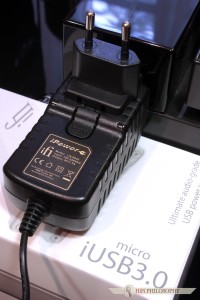
The regaining process starts from the very beginning, that is from a special power supply which filters out ground noise.
AKG K712 (Stefan Audio Art cable)
Now it’s time for a comparison. Because the AKG has been used while testing the iDSD playing through the earlier iUSBPower, also with Gemini cable, any potential differences will only occur between the amp-transducer and computer, as now we only replaced iUSBPower with iUSB3.0. So we have the same thing but with better quality and a different name. I just want to add that iUSB only had about a week to warm up and was brand new when I got it. But time was pressing, because other reviewers also wanted to get it and were rushing me. It’s no surprise that everyone wants to see this new iUSB and test it themselves.
The professional AKG have preserved the overall style of energetic attack shown by Grado, but the foreground was pushed further back, and they surprised me with a much bigger scene. The sound wasn’t either lighter or darker, but filled a huge, wide-spreading scene. Theoretically, it shouldn’t be a surprise, as they are known for big scenes, but it is their unprofessional predecessors, the AKG K701 that are characterized by huge scenes, and not the K712 PRO. Apart from that, comparing AK380 and Grado, the latter placed the scene much further but the impression of its magnitude was similar in both cases. But here AKGs caught the wind in the sails and could navigate towards much greater oceans. And the journey was perfect, the sound had enough air, but also didn’t lack density. However, what dominated was energetic stroke, rough depth of textures and super clear reproduction. No leniency, so again – like with Grado – the normally lenient headphones began to delve deep into music. They didn’t overdo it, but all the time they were on the line and it was a far cry from music in its relaxing version. Just like with Grado, the bass was very good, there was no need to enhance it with X-Bass processor, and the huge scene didn’t require 3D editing. Although after applying it, the scene grew even bigger and the sound became lighter, but not too light.
Sony MDR-Z1000
This model also did great while testing AK380, and now it has confirmed that it has many talents. These headphones had even more energy than the previous ones and the bass was even stronger, and they were faster. In addition – and what’s more important – they were more musical, which is quite surprising, especially taking into consideration that Grado are very musical, and it shows that this set is very well matched. Apart from that, the sound was very spacious, but there was no impression of the scene magnitude like in the case of AKG. But neither was there any impression of confinement or overlapping. The space had its size and order, and the bustling energy didn’t let you focus on anything else.
Let me clarify one more time – it wasn’t a show off of musicality with rough explicitness imposing on you, it was smooth and wavy music, but from time to time Grado and AKG proved better. They were more rough than AK380, but also stronger and more aggressive. The music was full of good energy and the expression of brass band was directly referring to the real thing. Perhaps treble somewhat lacked dimensionality, but the dynamics and overall form was as real as you can get. If this iUSB3.0 will warm up the right way, then it will achieve absolute perfection.
AudioQuest NightHawk
Significantly more expensive NightHawk with newer design have proven that they can do even better. There was even more air flowing and when it comes to musicality, this model outperformed all the previous ones. They still haven’t fully warmed up and slowly, after a reverb jump, they regain their proper musicality. Nevertheless, they will probably preserve their reverb and large scene character. They are definitely the most explicit among the tested models and their musicality makes them sonically universal, so they feel at home with any repertoire, and you can forget that you are wearing them. And I don’t mean comfort, although they are indeed very comfy, I mean how they play – as if there were no intermediate devices. It is achieved with their super transparency, you can literally see the air flowing while you listen, and it is supplemented with the smoothest phrases among all the compared sets. And this too wasn’t relaxing, it was pure realism, at times even tangible. Nevertheless the music flow and waves were much better. What was also noticeable, like in the case of all the previous headphones, was a slight tensing of sound, but only slight, constituting a background for this restless energy. It was accompanied by proximity of the performers, who seemed huge, and the vibrating air had a metaphysical taste. And again, as always when music is exceptionally good, you can feel undeniable presence of some being other than yourself, the accompanying trebles are calmer and the dynamics less imposing, more like staying in the background.
Grado GS1000e
Still warming up Grado, just like AudioQuest, have shown analogical style, but with scene magnitude like with AKG. I’m not saying that NightHawk have a small scene, because now, after good warming up it is big, however its magnitude is not so obvious like is the case with Grado. At the same time, they have super direct character, which makes the AKG, which were praised a moment ago, seem like they were behind a veil. They also have great energy and dynamics – the aspects that are clearly favoured by iUSB itself. Analogically to AudioQuest, this model is exceptionally clear, with air constantly flowing, and going into the abyssal depth of scene is a source of immense pleasure. The space, clearly coming to life, seems to have a life of its own, trebles are noticeably more emphasized, which additionally expands the space and gives more pronounced textures. Roughness, however, was rather mild, so stylistically similar to the one in NightHawk. But it’s not the reason to think that the headphones lack transparency or clarity, because these qualities are of the highest class.
I can’t say that the headphones in this ifi duet are less musical or that, just like AKG and little Grado, they played technical sound, because all the energy and dynamics gave them a totally non-technical character. Nevertheless the big Grado and NightHawk were in this respect much better. Undoubtedly, both more expensive models are better at separating the sources and reproducing the musical layers and I can’t say a bad word about the cooperation of these layers. At the same time, their advantage in reproducing the dimensionality of trebles was noticeable, and this is the key thing which makes them more musical. But what is the best is their transparency and the energy coming at you from every corner. It was neither a style closed in small space of accumulated energy nor a huge space of calm scenery. The space was huge, but the music creating it was dynamic and full of energy. Add to this lots of air in all sounds and superb transparency of the animated space – and you have all the qualities that make a spectacular composition which rarely can be found together in one place. And surely not at this price level.
Listening continued
Fostex TH-900
Luckily, the flagship Fostex also had a chance to take part in testing iDSD, so I could refresh my memory. And the memory is telling me that if anyone has any doubts about the usefulness of iUSB3.0, they should try these headphones. Wonderful! – and it’s not an exaggeration. I know – iDSD costs two thousands, iUSB similarly and the cable to connect them almost a thousand. But on the other hand, it is a complete set including cables and a transducer with the best clock, so not just an amplifier. And this set is playing so good that it keeps amazing me. Especially with these Fostex. Perhaps once NightHawk and Grado have the same number on their counters, I will be able to say that they play equally well. But at present, the Japanese drivers closed in a raspberry housing covered with urushi lacquer are winning. For the first time the ifi set could achieve its full musicality, and the depth of sound, magnitude of scene and overall energy were really paralysing. By this time I should have learnt that small devices can do much, but I have never heard them do so well. Well, maybe not completely, because the whole ifi stereo set was of astonishing quality, and this can be supported with iSB3.0 as well, instead of iUSBPower, which bodes well. To be honest, I don’t even feel like analysing the sound in all details, but the word “fantastic” should be enough. The show is so good that it makes you think the equipment must be really expensive. If someone put these headphones on my head and asked me to guess, I would say it must be some new transistor amp worth several thousands. The music was bustling, effervescing, sparkling – all this in 3D, with full sumptuousness and the energy of a steam hummer. Two little motherfuckers, and they play like magic…
I couldn’t find anything to complain about. Admittedly, there was no sweetness or seductiveness like with tubes, but the depth of sound, constant restlessness and most of all the illusion of reality together with energy constantly flowing from everywhere were truly overpowering. It is amazing, really amazing. Just for your interest I can add that when playing Immigrant Song, it wasn’t the bass guitar (like with Grado GS1000) to be the most prominent, but the drums. The closed-back drivers gave them even more power and made them roll like a thunder.
Audeze LCD-3 (FAW Noir Hybrid cable)
The flagship Audeze model, the one which price has gone up recently, causing loud protests among audiophiles, also showed a different style of iDSD accompanied by iUSB instead of iUSBPower. It wasn’t only more energetic, which was the case with all the previous models, but also the show was quite different. The music wasn’t any longer calm and somewhat detached, but rather direct, powerful and clear. In general, they weren’t as good as Fostex, but they had equally analogue character and musicality, although they were a bit more modest when it comes to dynamics and bass. These classic planar headphones, the ones produced before the revolution started by OPPO, have their basic needs when it comes to power supply, and the power of about 2 Watts is vital for them. Better power supply provided by iDSD caused that the headphones were livelier, had more pronounced trebles and were faster. But it couldn’t give them the positive energy or powerful bass, which Audeze is famous for. They sounded better when it comes to reality, but it was like sitting on the fence between a purely relaxing sound and a sound that is explicitly energetic and realistic. It was good, but not exciting in any aspect. Especially in comparison to Fostex which I tested a moment ago.
Final Sonorous X
With the flagship Final Audio, coming back to the heights of explosive sound was immediate. These babies don’t need much power to achieve their full strength, and you can notice that right away. And because they have a closed-back construction, just like Fostex, the bass is explosive, and the pulsing came back with full power, and the cloud of bustling energy was there.
After so many rendezvous with them, I guess I don’t have to add that the details were perfect, and they were accompanied by unique foam on sounds. As if the details were tearing away some tiny music particles and were carrying them on like sea breeze. It gave the effect of exceptionally sophisticated trebles, but was also interfering with overall show integrity, to which common headphones users are used. – There was a characteristic sound dispersing element and a silver cloud of particles dancing among perfect transparency, which had a considerable impact on the reception, making it very unique. These headphones are extraordinary and different from any other – you can either love them or hate them. Anyway, the depth of sound is astounding and they create a unique musical experience, which was very well showed by the little-sized but high-class ifi.
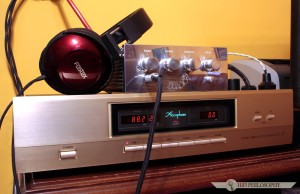
In practice, all this works surprisingly well. And not only DAC from ifi can use the advantages coming from iUSB3.0.
Final Audio Piano Forte IX
It would be a lie to say that these headphones didn’t sound excellent. Perhaps they weren’t as amazing as the full-size Sonorous X, and they didn’t have as much energy, but they surely had a reverb style and the clarity and overall music presentation was of high-end quality. Here again the clarity dominated, even though I couldn’t notice the flowing air pumped into each sound, but the space was big, with distant echo, and everything was transparent and easily distinguishable. There was no trace of excess warmth or sweetness, but it wasn’t either cold nor with technical traces. Having tested all series of headphones characterized by superb musicality, at first I didn’t even notice that this model has it too. You can even say that it is the only one that is more smooth rather than rough. The foreground is considerably moved back, but realistic and clear – most of all clear. No trace of dimness or pushing anything into shadows. The shading, that of a kind that is improving plasticity – was of course there – but nothing was hidden or understated. Smoothness was decorated with reverb, with each note clear and distinct. Huge space and bounce, only the bass and vibration were noticeably worse than in the case of circumaural headphones. But still, the sound is great.
With Accuphase DC-37 and Transrotor
No one ever said that iUSB3.0 must use only ifi accessories. Quite the contrary, just like the previous time I was using iUSBPower and dual Gemini cable with everything, now I could replace it with iUSB3.0 with the same cable, and the point was to see what this replacement would do. And I must admit that the new audio improving toy does what it promises and the eight paths of improvements are definitely better than three (including grounding). This expensive set helped music achieve a more analogue character, sound deeper and more subtle. It was also more energetic, with significantly stronger bass. All sounds were fuller and more pronounced, and a slight tension was only improving it. Again, the first prize goes to Fostex, which got rid of coldness and reverb (they often have such qualities), and their analogue character was emphasized the most. To a different degree this can be said about all models, so I won’t describe all the details. Let me just say that both NighHawk and Grado GS1000 were noticeably more analogue compared to the set without iUSB. The strict criterion was an interconnect between the transducer and amp, where I plugged an extremely demanding, resulting in unbelievable transparency, Crystal Cable Absolute Dream.

Some people don’t believe in such things, but for us it’s not a matter of belief, but rather empirical feelings, which make us recommend this amazing device with all our hearts!
Its analogue character is not as pliant as in Sulek, it perfectly shows all the rumble, pitches and other imperfections of the connected devices. As a result, listening to computer files with it can be hardship. But iUSB3.0 has managed to fix that, and all the headphones were able to play analogue this time. Even though Transrotor amp is more transparent than sweetening and Accuphase transducer, whenever something is wrong, produces excessive reverb and sounds strange as a result, which Transrotor together with Crystal Cable have no intention of hiding. However, with iUSB this didn’t occur, even though it was there with iUSBPower. With the latter, only good files could be tested in analogue, and not with all headphones. Well – now I can only admit that iUSBPower will have to step aside, and it goes without saying that iUSB3.0 will replace it. For now I have to give this toy to other reviewers, but I’m going to get it back, no matter what.
I need to add that of course Accuphase-Transrotor duet was more sophisticated and better in every aspect compared to iDSD alone, but taking into consideration that it costs twenty times more (not to mention the bloody interconnect for ten thousand Euro), it is no surprise. But if you think that iDSD can’t hold a candle to this expensive stuff, then you are wrong.
Summary
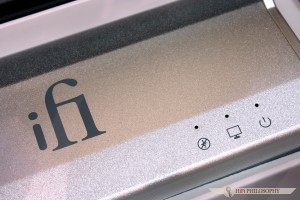 There is nothing to sum up. This device’s contribution to the quality of sounds tells you everything. Even those who own very expensive transducers should use it, because the effect is much better. Of course you can’t generalize, but apart from the Accuphase I also tested a few others and each time the effect was spectacular. There’s no guarantee that it will be the case every time, but not trying this out would be hubris. It is not a shame for expensive DACs to use ifi cable and their improving device. Audiophilism is not a lavish party, where all that matters is pomp, it is rather an individual path to perfection, which is significantly smoother with iUSB3.0. Of course the same applies to those who own more modest transducers, which is clearly visible on the example of iDSD. It gets my full recommendation.
There is nothing to sum up. This device’s contribution to the quality of sounds tells you everything. Even those who own very expensive transducers should use it, because the effect is much better. Of course you can’t generalize, but apart from the Accuphase I also tested a few others and each time the effect was spectacular. There’s no guarantee that it will be the case every time, but not trying this out would be hubris. It is not a shame for expensive DACs to use ifi cable and their improving device. Audiophilism is not a lavish party, where all that matters is pomp, it is rather an individual path to perfection, which is significantly smoother with iUSB3.0. Of course the same applies to those who own more modest transducers, which is clearly visible on the example of iDSD. It gets my full recommendation.
Cost of the tested devices:
iDSD micro – 2499 PLN
iUSB3.0 micro – 1949 PLN
ifi Gemini cable – 925 PLN
Equipment was delivered for testing by Polish ifi Audio distributor:
Manufacturer’s website:
System:
- Source: PC.
- Transducers: Accuphase DC-37, iDSD micro, Mytek 192-DSD DAC, Phasemation 7A- HD192.
- Headphone amplifiers: iDSD, Transrotor.
- USB cable: ifi Gemini.
- RCA interconnectors: Crystal Cable Absolute Dream, Sulek Audio.
- Power supply cables: Crystal Cable Reference, Sulek Audio.
- Power strip: Power Base HighEnd.








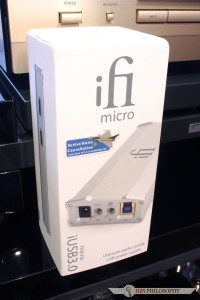
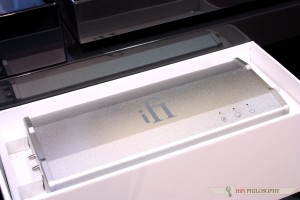


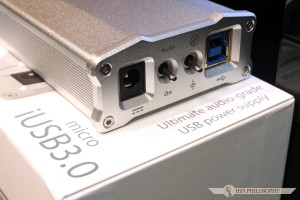
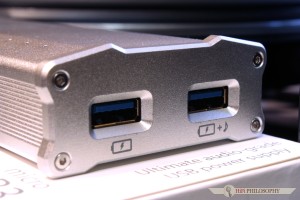

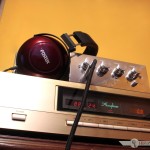
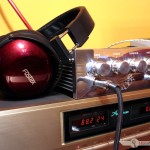
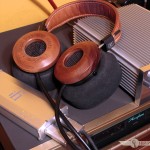
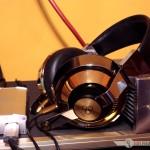

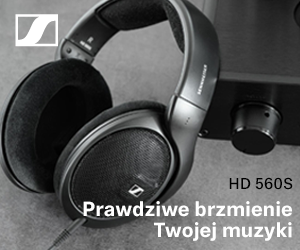

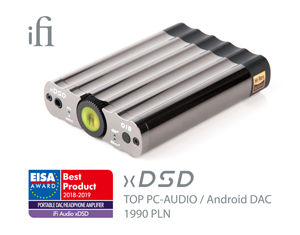


Ponieważ nie ma jeszcze forum, pozwolę sobie w tym miejscu napisać coś całkiem nie na temat, ale za to o najbardziej bieżącej sprawie muzycznej. Posłuchałem przez odrobinkę , dosłownie po kilkanaście sekund, dziesiątki finalistów Konkursu Chopinowskiego. Moim zdaniem najlepiej prezentują się Dymitr Szyszkin (różnie jego nazwisko piszą), Georgijs Osokins i Eric Lu.
My z żoną rano słuchaliśmy za to Anne-Sophie Mutter z sonatami Mendelssohna w TVP Kultura (na marginesie czasem dobrze mieć podłączony DAC do TV) na wieczór za to już zabrakło sposobności czasowej.